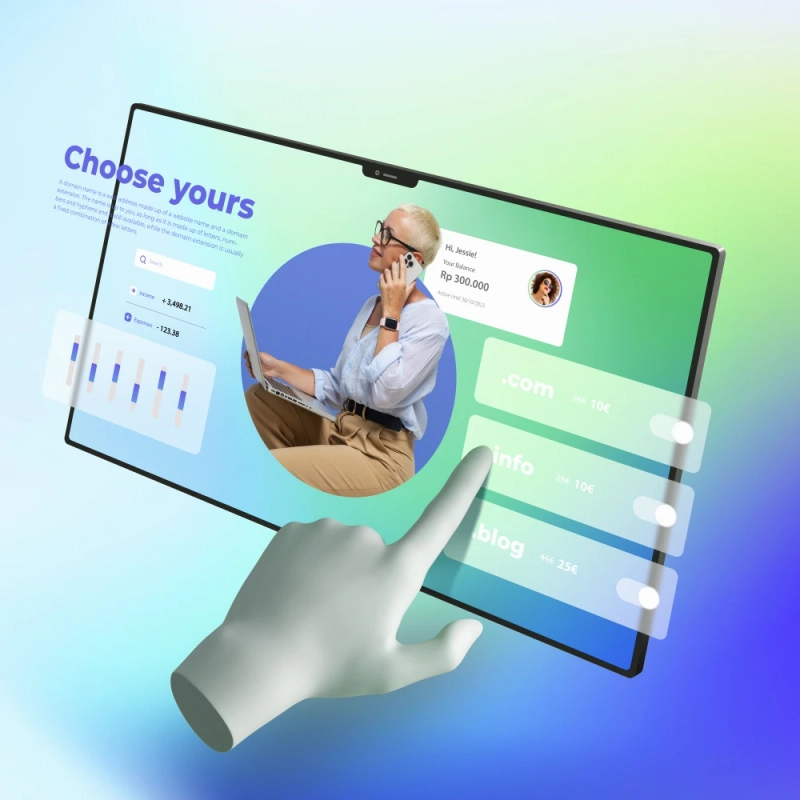
In the rapidly evolving digital landscape of 2025, Artificial Intelligence (AI) is transforming how websites are designed, developed, and optimized. Modern web design is no longer limited to static layouts and manual coding; instead, it harnesses AI-driven tools and technologies to create smarter, faster, and more personalized user experiences.
For businesses aiming to stand out online, understanding the role of AI in web design is essential and why are the leading website development companies invest more in AI tools and AI engineers than ever before. This article explores how AI is reshaping web design today and why incorporating AI-powered solutions can give your website a competitive edge.
What Is AI in Web Design?
AI in web design refers to the use of machine learning algorithms, natural language processing, and data-driven automation to streamline and enhance the design process. This includes everything from automated layout creation and content generation to user experience personalization and predictive analytics.
Key Ways AI Is Shaping Modern Web Design
1. Automated Website Creation
AI-powered website builders like Wix ADI and Bookmark analyze user preferences and industry-specific data to automatically generate customized website layouts. These platforms reduce design time drastically by selecting color schemes, fonts, images, and even content based on user input and AI insights.
This democratizes web design, allowing non-technical users to create professional websites quickly.
2. Personalized User Experiences
One of the most exciting applications of AI in web design is real-time personalization. AI algorithms analyze visitor behavior, preferences, and demographics to tailor website content, product recommendations, and calls to action (CTAs) dynamically.
For example, an AI-enabled e-commerce site might show different products to users based on their browsing history or location, increasing engagement and conversion rates.
3. AI-Driven Design Assistance
Designers benefit from AI tools that provide smart suggestions for layouts, color palettes, and typography. Tools like Adobe Sensei use AI to recommend adjustments that improve visual appeal and usability based on best practices and user data.
These assistants help designers create more effective and aesthetically pleasing websites faster.
4. Content Generation and Optimization
AI-powered content tools can create website copy, headlines, and even blog posts optimized for SEO and user engagement. This reduces the time and effort needed to produce quality content while ensuring it meets search engine requirements.
Moreover, AI can suggest meta descriptions, alt texts for images, and internal linking structures to improve on-page SEO.
5. Improved Accessibility
AI technologies assist in making websites more accessible by automatically generating image descriptions, optimizing color contrasts, and adapting layouts for different disabilities. This ensures compliance with accessibility standards and provides a better experience for all users.
6. Enhanced User Interaction with Chatbots
Integrating AI chatbots into websites improves customer service by providing instant responses, guiding users through the site, and collecting valuable feedback. These chatbots can handle FAQs, book appointments, and even upsell products without human intervention.
7. Predictive Analytics for Design Decisions
AI analyzes user data to predict which design elements and user flows are most effective. This data-driven insight helps designers and developers iterate faster, focusing on features that boost engagement and conversions.
8. Automation of Repetitive Tasks
AI automates time-consuming tasks like image resizing, code generation, and testing across multiple devices and browsers. This frees up designers and developers to focus on creative and strategic work.
Why Businesses Should Embrace AI in Web Design
- Faster Time to Market: AI accelerates the design and development process, helping businesses launch websites quickly.
- Cost Efficiency: Automation reduces the need for large teams and expensive manual work.
- Better Customer Experiences: Personalized and accessible websites keep visitors engaged longer.
- Competitive Advantage: Early adopters of AI-driven web design stand out with innovative and user-friendly sites.
- Data-Driven Decisions: AI insights enable continual optimization based on real user behavior.
How to Integrate AI in Your Website Strategy
- Collaborate with Experienced Developers: Partner with a skilled team, ideally available in local, as i am in Doha i will be looking for website development company in Qatar, same as wherever you are look for locally available companies.
- Use AI-Powered CMS and Builders: Explore platforms that offer AI integrations for content creation and personalization.
- Invest in Analytics and Personalization Tools: Implement AI-driven analytics to understand visitors and adapt content accordingly.
- Incorporate Chatbots: Improve customer support with AI chatbots tailored to your business needs.
- Ensure Accessibility: Utilize AI tools to meet accessibility guidelines and broaden your audience.
Final Thoughts
Artificial Intelligence is revolutionizing modern web design by enabling smarter automation, personalization, and optimization. Businesses that embrace AI-powered web design gain not only efficiency and cost savings but also the ability to create dynamic, user-centered websites that convert and engage.



